Episode #421: Five Phases of Implementation Every Math Leader Needs To Know To Overcome Resistance
LISTEN NOW HERE…
WATCH NOW…
Still stuck “talking” about change, but not seeing it in action? The real roadblock to change in math may not be teacher resistance—it might be your system.
Based on Jim Knight’s powerful article in Educational Leadership, “Moving from Talk to Action in Professional Learning,” this episode reframes what looks like math pd resistance in schools. We walk through the five stages of implementation—Non-Use, Awareness, Mechanical, Routine, and Proficient—and reveal how most educators aren’t resisting change… they’re stuck in a system that makes it nearly impossible to act on it. If multiple people are resisting, it’s not a people problem—it’s a system problem.
You’ll learn:
- What each of the five implementation stages looks like in real practice in math pd
- Why math educators appear resistant—and how fear, perfectionism, and lack of agency fuel hesitation
- How student-focused goals create momentum where strategy mandates fall flat
- Simple, leader-driven shifts that support movement in math pd from awareness to action
- What it takes to make professional learning stick, even after the workshop ends
Press play to explore Jim Knight’s findings and discover what it really takes to turn professional learning into professional practice.
Attention District Math Leaders:
Not sure what matters most when designing math improvement plans? Take this assessment and get a free customized report: https://makemathmoments.com/grow/
Ready to design your math improvement plan with guidance, support and using structure? Learn how to follow our 4 stage process. https://growyourmathprogram.com
Looking to supplement your curriculum with problem based lessons and units? Make Math Moments Problem Based Lessons & Units
Be Our Next Podcast Guest!
Join as an Interview Guest or on a Mentoring Moment Call
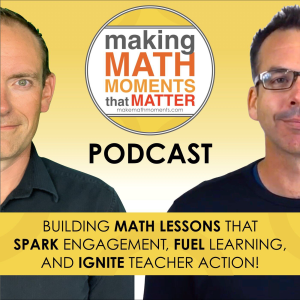
Apply to be a Featured Interview Guest
Book a Mentoring Moment Coaching Call
Are You an Official Math Moment Maker?
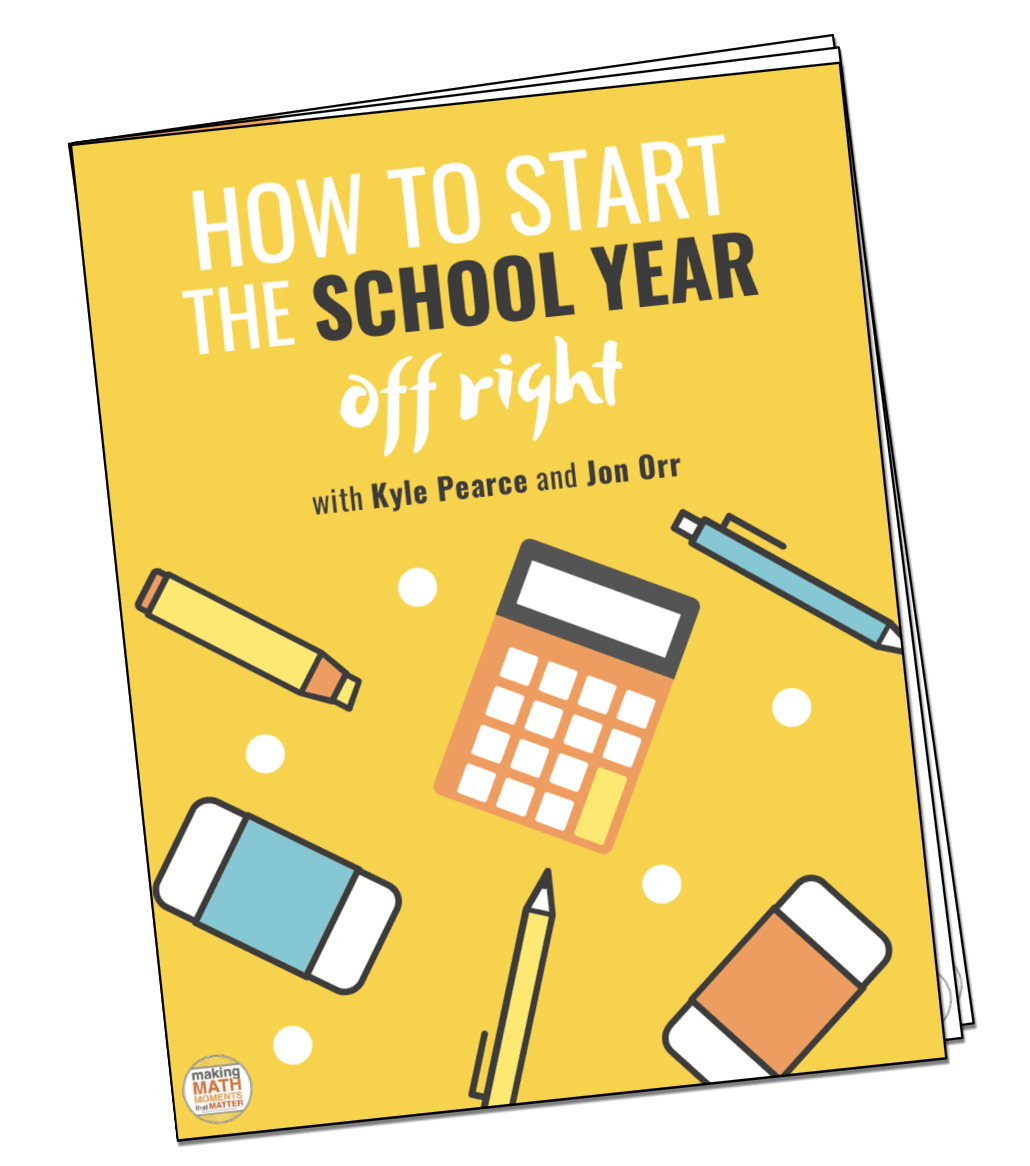
FULL TRANSCRIPT
Last week I was on a call with one of our district partners and we were talking about resistance. You know, when you’re trying to support change and you’re trying to innovate and have some type of, you know, impact and you just, feel like you’re coming up against, let’s call it, people are resisting the change. You know, if you’re listening right now, you know what we’re talking about. Like this is the, and to be honest, it’s like you were saying it came up last week. It’s like it comes up every time probably, but like, you know, our leaders, our coordinators, our coaches are called like have the, how do I get changed mindsets of educators that I’m trying to like help shift? they just don’t, if they could just see that this is so good, then so many problems would be avoided. And how do I do more of that is the very common plea we hear when we first meet with our teams before they start going down the road to make that a non-existent issue or an issue that’s minimized. I know that we want to unpack today some research, some learning that we’ve been doing. So keep it going, Yvette.
Well, I was, you know, of course, after getting off that call and, and, know, I’ve since followed up with that team with some recommendations or some suggestions that they might try. I did read an article from Jim Knight called moving from talk to action and professional learning. And there’s a couple of things that I really loved about this article that resonated with me in response to these challenges the school was facing. Now, the one quote I want to share right at the beginning, actually like texted it to you and Kyle to say like, love this quote. And I’m going to paraphrase because it’s a little long, but basically what what Jim says in the article is if you have a lot of people resisting in the system, it’s probably not the people, it’s the system or the change agents. like one of the parts too, like another part of this particular quote is like, it probably has a lot less to do with individual personality characteristics. Like if it is a large number of people who are, are just not getting on board with the innovation, it’s probably more to do with the structure or the approach than it is the people.
In the system, this reminds me of the blog post that we shared on our website, makemathmoms.com, just only, I think a few weeks ago at time of this recording, which we said that, you know, don’t have a buy-in problem, you have a fragility problem, which is your system. you have an issue, and in this particular, you know, there’s a lot that we have to unpack about what the system problems is or are when we have a a reluctance or a resistance issue around a practice. But what we were talking about in that article that we wrote, which was about changeover, which is this constant changeover in two different ways. One is like initiative changeover. We just keep changing the focus. We just keep changing. no one’s gonna, like the resistance is because it’s like, I know how this wheel goes. There’s not gonna be any implementation follow up, there’s not gonna be any support. That’s like, we do this, but I don’t see how that impacts me. So it’s like, that was a fragility problem, but then also like a client or a personnel changeover problem, like a fragility of like, are people come and go and the system doesn’t support massive change at say leadership levels? How do we keep that consistency moving forward? So that reminds me of like, That part, it’s a system issue and I think we’re gonna get into some sometimes to the system issue but I think we’re gonna get a little bit more narrow than thinking, know, system leadership. We’re gonna get a little bit more narrow to thinking about like what does coaching systems look like to adjust that system from this article from Jim.
Yeah, that’s actually exactly one of the points that he made, which is like the system has a poor track record of following through. So teachers are skeptical. Or maybe they’ve had bad experiences with top down initiatives in the past, or they feel like their voice or their agency, you know, wasn’t considered in the process. I really like one of them. One of the points he made was around like perfectionism. Like if imagine you are really good at something. Yes. And now someone’s telling you, you need to be vulnerable and try something new. And you’re not proficient at that new thing. And you know it’s going to be messy and you know it’s going to be uncomfortable. And it’s like, well, I’m really good at it. I had this experience in our training session last night around multiplication strategies. Like you might be really good at partial products over addition. So when I ask you to break apart using factors, you’re reluctant because you’re like, I’m not good at that. I’m good at this thing over here. So that’s another reason people resist. And some of the other ones were, you know, of course, like, philosophically, it goes against what you believe. And that’s where we talk about like strong beliefs loosely held. I actually had this conversation the other day about homogeneous grouping in reading with a colleague. And it’s like, I try not to stand too firmly on like that research is against that, because maybe there’s nuance, maybe there is opportunity. I just think that that’s also, it’s part of our identity, it’s part of our philosophy, and so when someone comes in with something that’s going to shake our foundation of belief, for sure, it is hard. So these are all the reasons that are highlighted in this article of why people resist. And again, that it’s probably not the people. It’s the system or the change agent, which is like how we’re going about supporting the change within the system, how it’s being delivered, what the messaging sounds like, what supports in place. I also really liked in this article, Jim does take some time to talk about, you know, these levels of implementation. So when we’re trying to make change, you know, we want to see innovation. We’re trying to shift practice. We have to understand as those who are leading change what the levels of implementation are. And we talk about this all the time, know, from like non-use to proficiency. How do we move people through those stages and recognizing that they are stages and they’re not linear and they’re messy and they’re going to take time.
Yeah, and I think knowing, so that’s what we wanna unpack here. We’re gonna share those stages with you, but I think the big idea, think, at least for me and the teams that we’ve been supporting is that knowing the stages, like knowing these ideas about psychological emotions and motivations and what to look for, like the stages here we’re gonna talk about, the level of implementation from a practice point of view. Knowing that as a leader, whether I’m a school leader or a coordinator for math, or maybe I’m just a classroom teacher leader, knowing that where I am on the stages or where my teachers are on the stages will help you address those resistance barriers that we just stated. Specifically, that like the system has a poor track record for moving on from one initiative. It’s like if I know that most of my teachers are still in the awareness phase or the awareness stage, Then am I ready to shift? Like, am I ready to all of a sudden throw something new at them, knowing that we’re going to be in the awareness stage again? And we’re always in the awareness stage. And therefore we never see traction. And then teachers learn that this, whatever last year’s awareness, like awareness, you know, PD session was, well, we’re going to have another one, but, but, but, you what does that really mean? But what my practice? And so when you know these five different levels of implementation, it will help you get a clearer picture of like when to stick with something longer to avoid some of these Resistance barrier. So all of a sudden years late, you know, not years later, but later All of a sudden you’ve you’ve developed this culture inside your building inside your system that says We don’t just we don’t just like shift That’s not a barrier anymore that we constantly are shifting priorities and and you know people don’t carry you know initiatives aren’t carried forward when we have leadership shifts like that’s not one of the barriers like we have barriers, but that’s not one of them anymore because We know about say this level of imitation, we’re dedicated to making sure that we are monitoring it when we decide to implement something new.
So let’s impact them. So stage one, let’s call it, is non-use. And I think that, you know, to summarize, it’s like, why are people not using this practice or implementing this innovation? Well, let’s say, for example, it’s like you wanted to support the implementation of a task-based approach. So you wanted teachers to be using open tasks with high cognitive student demands, student-centered, and it’s like they’re just not doing it. Why? probably either because they don’t know, we don’t know what we don’t know, or because they’re intentionally avoiding it because it misaligns with their goals or their beliefs. Or it’s like, it doesn’t work for me, it doesn’t work for my students, it just does not exist currently in their practice.
Yeah, yeah, and that’s a great point because it’s like when we decide to, this is the part that you have to kind of like that second bullet point. First, obviously, it’s like it doesn’t know exists. This is where we typically land when we design professional development for teachers. We bring in a guest speaker, we hold a session on a PD day that’s coming up, or we have after school sessions even on this one idea. It’s really we’re trying to move people from the non-use to the awareness stage, which we’ll get into. you know, we need to tell them it’s there, to show them what this looks like, but then your job ahead of you is to try to say, like, this is the right move because, and then, and this is where, right before we hear it record, we were talking about how some of these stages play exactly into what we’ve shared on the podcast over many years about, you know, the analogy about the elephant, the rider in the jungle is like, you’ve got to overcome, like in order for you to help people switch, their mindset or their belief or, you know, switch of behavior, you have to battle all three of those pieces. And the elephant is your emotional side, which means like, like you said, people may not know that it’s there, but it’s like, they also don’t, they don’t think it aligns to their goals. And that’s because we haven’t done a really great job of presenting what problem is it really solving? Like, what are we really after here? Cause that can address the emotional side of what we’re trying to do, the outcome that we’re striving for. Now, you the elephant is that and it’s huge. It’s huge and that’s why it’s an elephant in the analogy. Whereas say the rider is the, you know, the direction you’re trying to go. Like the rider steers the direction. That’s your logical side. A lot of times we’ll try to like tell people the logic, hey, this makes sense because it’s gonna support this data, but it’s like, it doesn’t speak to the emotion. And if you’re gonna move anyone from the non-use to the next stage, you’ve got to address those two things.
non-use, think we have the stage where most of us get stuck, you know, systemically when it comes to improvement, which is awareness. Awareness means people know about it, they may be able to speak to it, but there’s inaction. Like there’s nothing actually happening in response to it. And we talk often about when we do one-off professional development. So we bring teachers in for the day, they do a day presentation or a workshop, and then After that workshop, there’s no follow-up, there’s no support, there’s no pressure in place. The best we can really hope for is awareness. And one of my favorite quotes from this article is when Jim says, in his experience, it takes only about three days to forget most of what you learned in a workshop. Right? So it’s like, we’re aware yet. Like it’s like, three part math lesson. Sure. I heard that. I’ve heard them say that before. I think I remember a PD session last year on three part math lessons, but I don’t use it.
And to be honest, we just got off a call with a team where they had a PD session planned coming up and we helped them say like, okay, what is your goal here? Is it like your goal is to get to the awareness stage and that is it? Because if it’s not and you wanna get to the next three phases at some point around this idea, like what are you committed to making shifts in to get there? Because a lot of our PD in a way, like you’re saying, dies at that stage because it’s like, we did some great work, we brought the right people in, we said the right things, but then it didn’t translate into traction.
Beyond awareness, we have mechanical. And when I thought about mechanical, I thought about my own implementation of Cathy Fosno’s mini lessons in the early days. And like, it was effortful. Like I had to work really hard to facilitate those problem strings. And oftentimes they were clunky, they were messy. I was confused. The students were confused. Like they weren’t, it wasn’t smooth sailing at this stage because I was still learning it myself. I was like really married to the book. had to look at the script. Anybody out there in the literacy world who’s implementing UFLY right now for explicit phonics instructions, probably many of your teachers are in the mechanical stage where it’s like, I can follow the script, but I have to have the script in front of me. It’s going to be a lot of effort. I’m not fluid. I’m not adapting. And it might be, you know, a little chunky, a little messy. Like it’s like a clunky kind of situation that we’re dealing with at that mechanical stage.
for sure, and I think there’s a lot that is in that stage, like the worry that we’ve had, and we’ve talked to say, know, Peter about this, that BTC, building thinking classrooms, some of the mechanical moves can be replicated mechanically, you know, quickly, and you can be stuck at the mechanical phase because you’re just going through the motions and not getting, the next part, the next two phases of implementation because you’re seeing maybe it’s actually helping you with your your goals, you’re seeing some engagement happening in the classroom because you’ve got kids up at the walls, but they’re really, are they really doing any deeper thinking or deepening on the same meaningful connection? Maybe, maybe not, but I think a lot of people are saying like, hey, I see this, that must be good, or I’m doing this, but I’m doing it in a rote mechanical type of way, and therefore it must be working. And I think we could, that’s the trap about sometimes professional development implementation is that we might think, this is the right move or hey, we’re doing great here on this move, but really what we’re doing is you’re witnessing mechanical rope memorization and you haven’t gone deeper into the next phases.
And I think the fear of the mechanical phase is that, like, it doesn’t feel great. And so people then tend to abandon. Remember we talked about like the implementation failure? Where it’s like, like we, hey, we we rah rah rahed and we tried hard, but then all of a sudden it’s like, this is not, this is not doing what we thought. So then we completely go to the other side and say, we have to completely abandon this because it’s not doing the things we did, but it’s hard work. So we go back and try, go back to the old ways and we, and we write this off permanently forever because we said we tried it and it didn’t work and Really what happened, I think, there is you were stuck in the mechanical phase.
Exactly. So I think about how do you go from mechanical to routine, which is the fourth phase. And I think about my own, again, experience with mini lessons or a problem string. And I think that’s where I am still in that routine phase where it’s like it became part of my regular practice. I was doing it consistently. I felt good about it. I wasn’t super reliant on, following the book word for word because I was more familiar with the models and the strategies. But you know what is so interesting that I took from this article is that there is risk in the routine phase because sometimes we think we know more than we do and we start to get a little bit too rigid. We’re oversimplifying. We’re like, no, it looks this way because the book says it has to be done this way and there’s no innovation. There’s no flexibility. There’s you know, responsiveness to it. We’re too stuck on like, well I do it like this every day and it looks like this, it sounds like this. And that was the fear that was expressed in the article is that like, of course, routine is better than mechanical. It’s a step along this continuum, but there’s still work to be done if somebody’s in that routine phase.
sure. It’s like, it’s like thinking about, like these totally resemble like the levels of fluency in terms of like number sense and operation, right? It’s like we got to this routine where I’m like, I’m pretty fluent with this procedure. Therefore, I always just do it. And I actually don’t take that next step to like, take that deeper. And then then you’re in the stage of like, strongly held beliefs strongly held. And then it’s hard to get out of that stage. And then you you are now a resistor, right? And now you’re a resistor to any say new learning that could be adopted because, hey, I know that this was going to work. I tried it, it became routine for me, but now it is routine and I don’t budge. that’s, think the last thing we want as educators because you know that whole idea is like what we want is flexible teachers. want teachers to be able like, can move from this route, like this instructional routine to this instructional routine because it makes sense. And it’s because it’s the right thing to do for this group of kids or that one kid. And we don’t want to get caught in this. Like this is what we do every single day. And I think we hear that this is, this is something in edgy in math education. I think in particular that math teachers are in the pendulum swing. It’s like, we always do this or we always do this. And there’s no in between. There’s no like, Hey, there’s a nice balance here. And today I’m going to do that because it’s the right thing for that lesson or that group. Like we want our teachers to be flexible that way, but so many get stuck in the, is the way I do it, or this is the way I do it. that’s the, even though this is far down in the, say the level of implementation, this is the worry here.
So then you already started to describe the distinction of that fifth level of proficiency, which is like, I deeply understand it. I’ve internalized it, but I can also adapt it to fit my students needs. I can be flexible and thoughtful and I can personalize it for this group of students compared to this group of students. we’re out of that rigid routine phase into, I deeply understand it. I’ve internalized it. I am comfortable with it, but I’m not stuck that I can’t continue to see opportunities for optimization. And I’m not looking at impact constantly and being flexible in my delivery.
Yeah, and I think when I reflect, when I made some when I made some changes to my classroom, one of the early changes was I was like, I’m gonna do problem-based lessons and I’m gonna do it through three act math style type lessons. And then I became, I got to the routine phase. I’m like, I’m doing this all the time. But then it’s like, you start to realize because you’re in the routine phase, you’re not as proficient as you think, but then the moves is the experience, the volume of doing it will allow you to say, move from routine to proficient if you’re open-minded enough to do that type of thinking and that type of work. Because where it got to, it’s like, this makes sense, but then it’s like, the five practices completely helps me do this better. And therefore, because I wasn’t strongly held, believed strongly held, loosely held, like, well, how does that help me do or get closer to my goals of what I’m trying to do in my classroom? Like this experience I’m trying to provide my students. Being open-minded enough allows you to step from routine, I think, to proficient and then being able to be like, I can be flexible when I need to be flexible because I’ve tried different things to make sure that I have better tools in my pocket for when I need them.
I think my experience of how, and I honestly reflect on like, what am I proficient at? Like I think that because we are both, I hope, open to learning and recognize our own gaps in learning, like I question where I am proficient, but I think where I got closest to proficiency also was by sharing my practice with others. Like where I was open to team teaching and getting feedback and observing other teachers and co-planning, co-moderating. Like I think that how I move from routine to proficient was by leveraging the expertise of those around me and being open to getting feedback on the impact of my instruction. In the article, Jim also talks about, you know, some ways to… I don’t even want like, you know, I don’t know. Yeah, it’s like… Shift the system, Like you said before, it’s not the people. We have resistant people and knowing the five stages of implementation is really important to prevent some of those barriers. But then it’s like, okay, let’s say I know them and I wanna shift my system because I know it’s not the people, it’s a system problem. How do I shift the system?
So one of the recommendations that really resonated with me from the article was about focusing on students and the impact on students. So the example that he shared was, I’m not gonna make the goal of implementing fluency routines. The goal is to strengthen student fluency. And we’re gonna measure and monitor. And continually state that that’s what we’re doing. We’re not doing this. We’re doing this. We’re not doing number sense routines. We’re doing this. We’re after stronger, proficient students. We’re not doing BTC. We’re after resilient problem solvers who are thinkers and not just mimickers. Those are the things that constantly say we’re doing. I don’t want to say, what are you doing in math? And we’re like, well, we’re doing BTC. No, you’re not. No, you’re not. Focus on the outcome, focus on the student experience.
I love that. So that’s exactly what, you know, I summarized the one paragraph is like, don’t implement strategies like that, implement strategies like we’re implementing BTC, work toward visible outcomes for students. So focus on, we talk about this a lot with our district partners. It’s like, what is the change you want to see? Because the strategy may come and go or flex or adapt. but what we want is the impact on students. What is the outcome? then, and I like that. So he, we reference Follins work a lot around innovation. It’s referenced in this article as well around this idea of like, that’s the what, right? Like what we want is better outcomes for students. want our students to have increased computational fluency. The how is fluid. The how is changing. The how is a process and it’s going to be messy, but let’s focus on the visible outcomes.
and then that’s the, that’s the through line. That’s the guiding thing. Like all of a sudden it’s like, now we’re not changing initiative to initiative. We’re always doing the thing. And it’s just, you’re right. The how is what shifts, but we, if we only say the outcome or we constantly say the outcome, it won’t feel like we’re swapping one thing for another all the time. That’s the culture shift.
Some of the other recommendations, one of them I think goes back to knowing these stages and knowing the indicators of where a teacher is in the stages so that we can offer appropriate support as far as feedback and coaching and follow up and peer visits and all of these things. And we’re going to talk on our Thursday episode about what this looks like practically in response to some of the challenges that our district partners are facing. But being really clear with our educators that this is going to be messy. We talk about this all the time, like the fear, like, well, the fear of change is that like, I’m not going to be good at it. And I’m a perfectionist and I want to be good at what I do. And I know it’s going to be clunky the first time around. And I probably won’t get the results that I’m hoping for. like making sure that that we know that that’s okay, that that’s part of the process and that it’s not going to be linear.
Right, right, what else? Is there any other, say, shifts that you would recommend for system change at this point?
I think that it goes back to, and this is kind of echoed in the article and in some of like, I’m going to summarize, I guess, like the big takeaways that I took as far as like, what do we do in response to resistance? What do we do to move educators through these stages of implementation? So it’s focused on the student outcomes, you know, make it about the students and what we want for students and the change that we want to see. One of them is of course, as we talk about all the time, which is how do you get from awareness? Out of awareness, like we get stuck in awareness so often and it’s like we need follow up. We need coaching. We need experiences. I actually just had a conversation yesterday with one of our district leaders. She went into a classroom. She’s a district level coordinator, went into a classroom with the school math lead to observe a teacher. They identified some push opportunities, some areas for improvement, and my question basically was, so now what? What’s the plan to follow up, to follow through? If the teacher isn’t consolidating the lesson, has the teacher seen a strong consolidation? Has it been modeled for them before? Can they go and visit another classroom? Like this is the ongoing type of support that’s necessary for any type of adoption.
For sure, for sure. And when you try to map it out and try to go like, what, and then the so what, like what’s next is, helps you clarify like what you can really commit to and knowing like what you want to be the focus because I think we get over, we got over initiative. We got so many things because what we always say is that we focus on so many, we focus on none, but that, we can say that. Therefore you can say you’re focusing on some, what are you actually committed to supporting? Because when you say I’m committed to going from awareness to proficient, well, what does that take? That takes like you’re saying that coaching continued follow up, continued focus, monitoring, teach your individual teachers through the stages of implementation, like thinking, know, like rubric continuum style, like where is this teacher on this level of implementation and, are we moving them through? Cause that could be, you know, the focus and, and stop you know, shifting from one thing, like stay with it longer. And I think knowing, you know, that thinking about that long-term planning can actually help you stick with things longer and then focus more on that, on that achievement and that, and that gains that you’re, you’re really after.
In today’s episode, we gave our reflections on this article by Jim Knight, Moving from Talk to Action and Professional Learning, but we will link the article in the show notes. you know, we encourage you to go and have a read yourself and what are your big takeaways from this article and how we can support the system and the change agents to face less resistance when it comes to implementing innovations within a system.
Yeah. And a little birdie told me just the other day that, make math moments is hosting while we’re hosting a summit in November. And we’ve been doing that for seven years as the seventh year in a row, that we’ve been doing that, in February of 2026, we are holding a leadership summit for math education. So specifically talking to math leaders, these are lead math teachers or system coordinators or math coaches or administration specifically on math improvement. And the little birdie told me that Jim Knight is going to be presenting there. So along with a number of other other speakers specifically on math education leadership on that day. So stay tuned. That’s coming up. You know, we will release the details very, very, very soon. On another note, if if any of this resonated with you and you need some guidance along the way and you want to make some of these changes in your mathematics programming or at your school level, at your district level, this is what we do. We help teams implement changes to get closer to their vision and their goals and we guide that process through our four stage process. So reach out to us over at makemathmoments.com, four slash discovery and we can talk about how our support can then look for you specifically and your constraints.
Thanks For Listening
- Book a Math Mentoring Moment
- Apply to be a Featured Interview Guest
- Leave a note in the comment section below.
- Share this show on Twitter, or Facebook.
To help out the show:
- Leave an honest review on iTunes. Your ratings and reviews really help and we read each one.
- Subscribe on iTunes, Google Play, and Spotify.
DOWNLOAD THE 3 ACT MATH TASK TIP SHEET SO THEY RUN WITHOUT A HITCH!
Download the 2-page printable 3 Act Math Tip Sheet to ensure that you have the best start to your journey using 3 Act math Tasks to spark curiosity and fuel sense making in your math classroom!
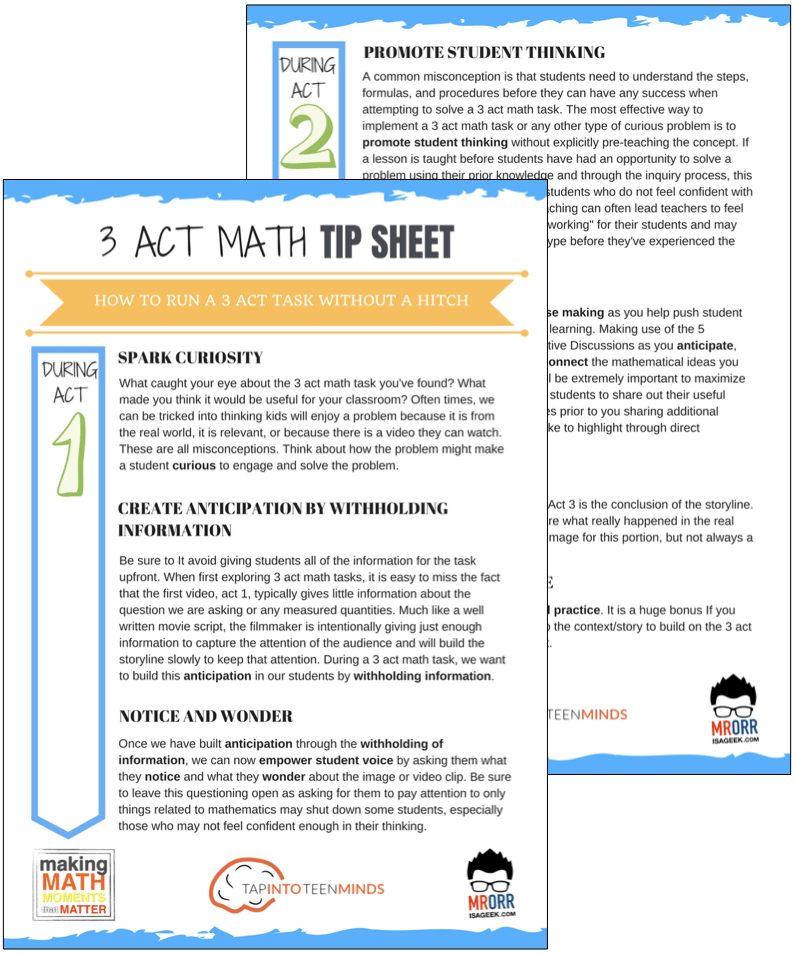
LESSONS TO MAKE MATH MOMENTS
Each lesson consists of:
Each Make Math Moments Problem Based Lesson consists of a Teacher Guide to lead you step-by-step through the planning process to ensure your lesson runs without a hitch!
Each Teacher Guide consists of:
- Intentionality of the lesson;
- A step-by-step walk through of each phase of the lesson;
- Visuals, animations, and videos unpacking big ideas, strategies, and models we intend to emerge during the lesson;
- Sample student approaches to assist in anticipating what your students might do;
- Resources and downloads including Keynote, Powerpoint, Media Files, and Teacher Guide printable PDF; and,
- Much more!
Each Make Math Moments Problem Based Lesson begins with a story, visual, video, or other method to Spark Curiosity through context.
Students will often Notice and Wonder before making an estimate to draw them in and invest in the problem.
After student voice has been heard and acknowledged, we will set students off on a Productive Struggle via a prompt related to the Spark context.
These prompts are given each lesson with the following conditions:
- No calculators are to be used; and,
- Students are to focus on how they can convince their math community that their solution is valid.
Students are left to engage in a productive struggle as the facilitator circulates to observe and engage in conversation as a means of assessing formatively.
The facilitator is instructed through the Teacher Guide on what specific strategies and models could be used to make connections and consolidate the learning from the lesson.
Often times, animations and walk through videos are provided in the Teacher Guide to assist with planning and delivering the consolidation.
A review image, video, or animation is provided as a conclusion to the task from the lesson.
While this might feel like a natural ending to the context students have been exploring, it is just the beginning as we look to leverage this context via extensions and additional lessons to dig deeper.
At the end of each lesson, consolidation prompts and/or extensions are crafted for students to purposefully practice and demonstrate their current understanding.
Facilitators are encouraged to collect these consolidation prompts as a means to engage in the assessment process and inform next moves for instruction.
In multi-day units of study, Math Talks are crafted to help build on the thinking from the previous day and build towards the next step in the developmental progression of the concept(s) we are exploring.
Each Math Talk is constructed as a string of related problems that build with intentionality to emerge specific big ideas, strategies, and mathematical models.
Make Math Moments Problem Based Lessons and Day 1 Teacher Guides are openly available for you to leverage and use with your students without becoming a Make Math Moments Academy Member.
Use our OPEN ACCESS multi-day problem based units!
Make Math Moments Problem Based Lessons and Day 1 Teacher Guides are openly available for you to leverage and use with your students without becoming a Make Math Moments Academy Member.
Partitive Division Resulting in a Fraction
Equivalence and Algebraic Substitution
Represent Categorical Data & Explore Mean
Downloadable resources including blackline masters, handouts, printable Tips Sheets, slide shows, and media files do require a Make Math Moments Academy Membership.
ONLINE WORKSHOP REGISTRATION
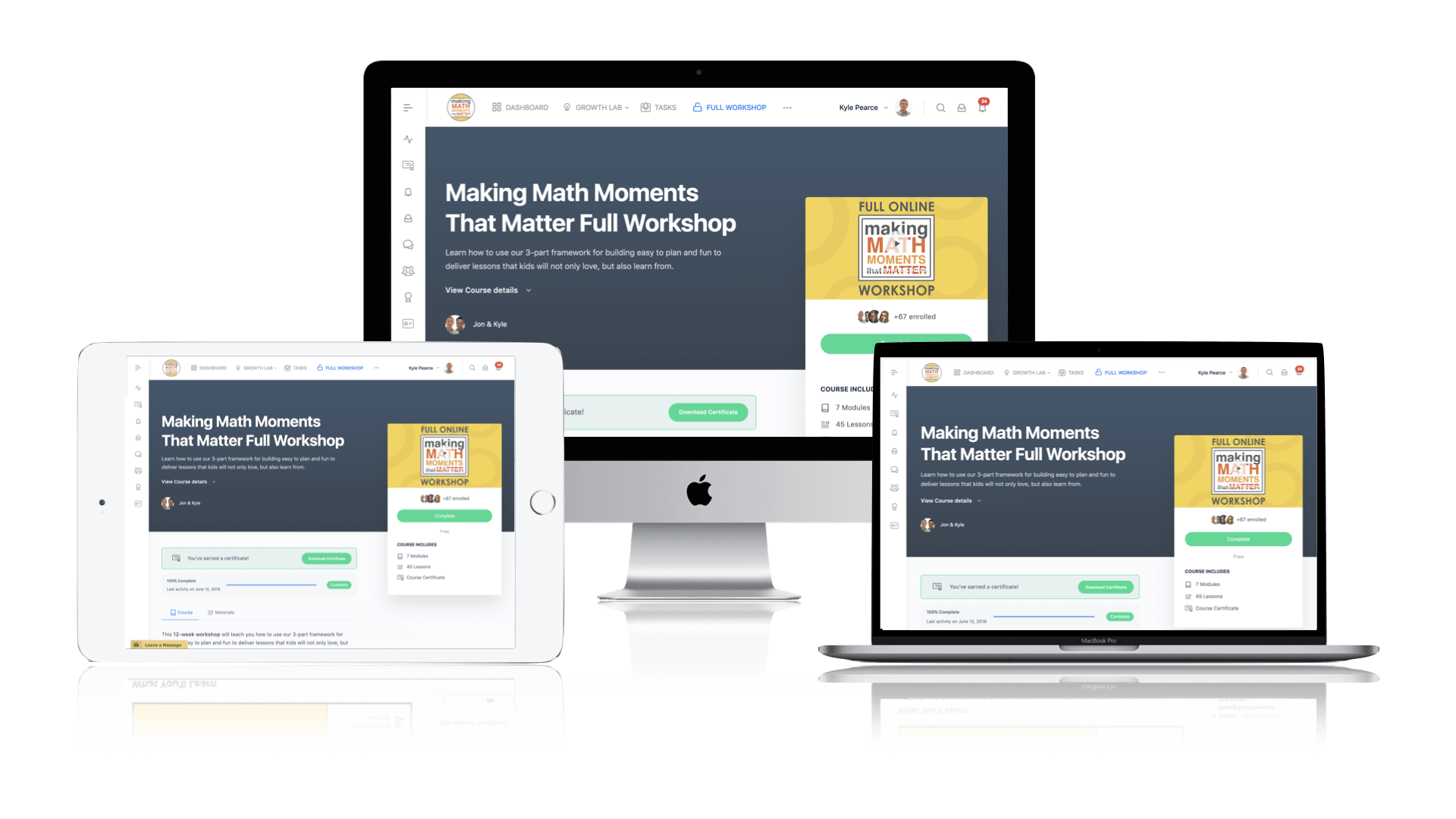
Pedagogically aligned for teachers of K through Grade 12 with content specific examples from Grades 3 through Grade 10.
In our self-paced, 12-week Online Workshop, you'll learn how to craft new and transform your current lessons to Spark Curiosity, Fuel Sense Making, and Ignite Your Teacher Moves to promote resilient problem solvers.
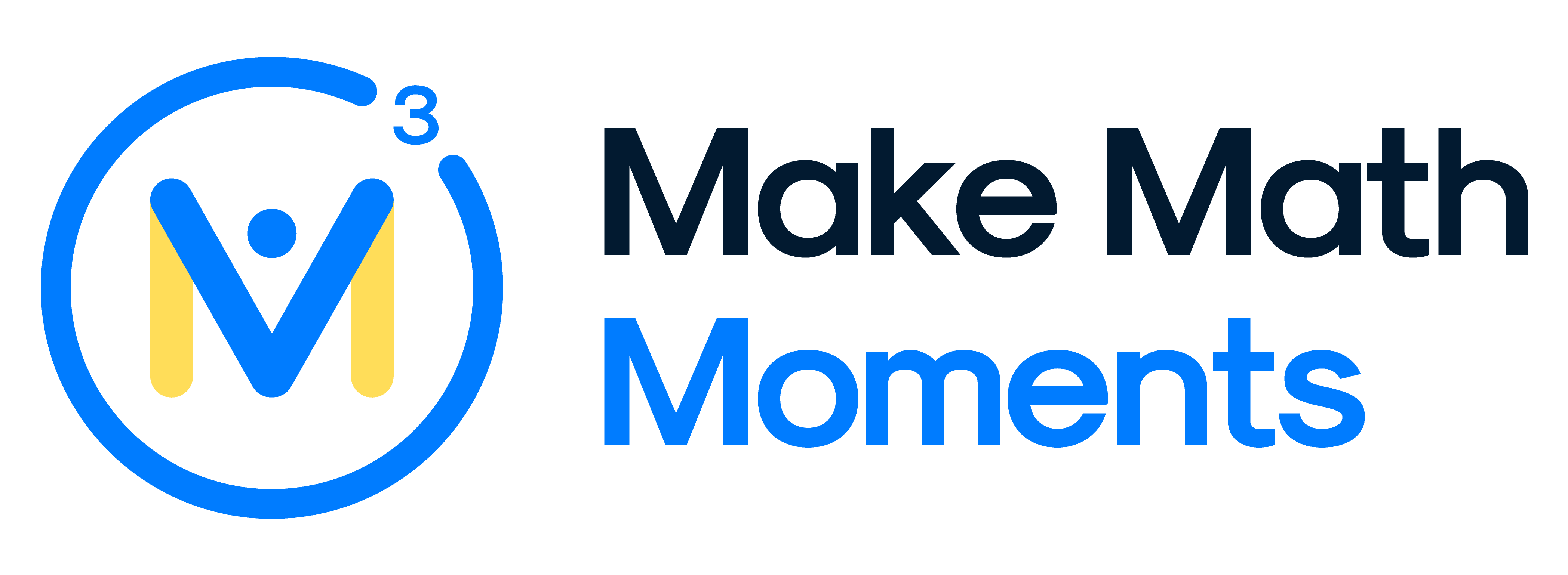



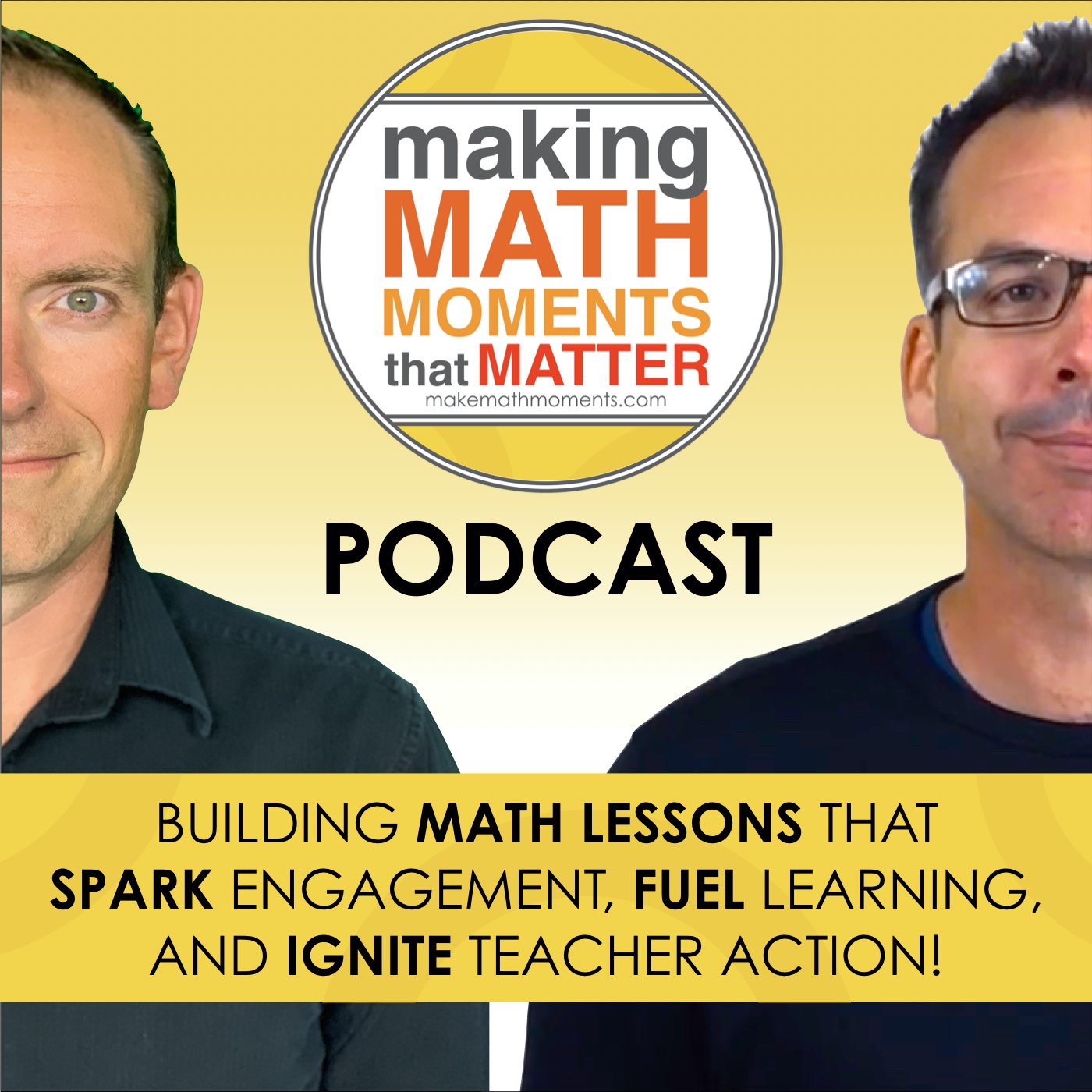

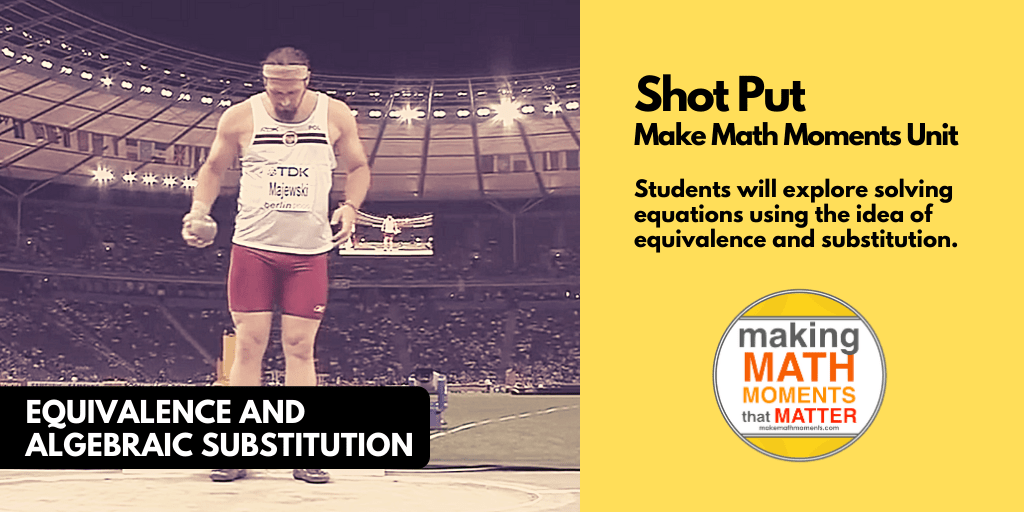
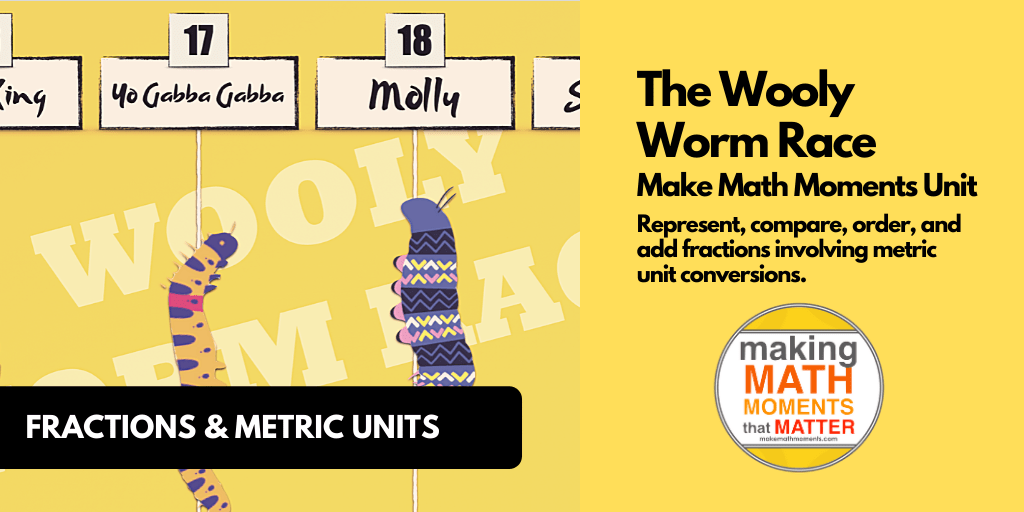
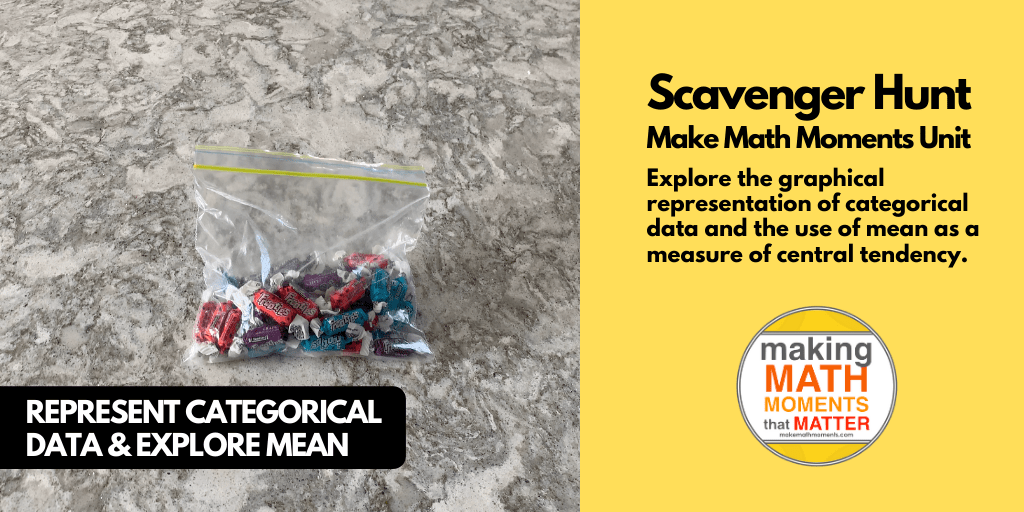
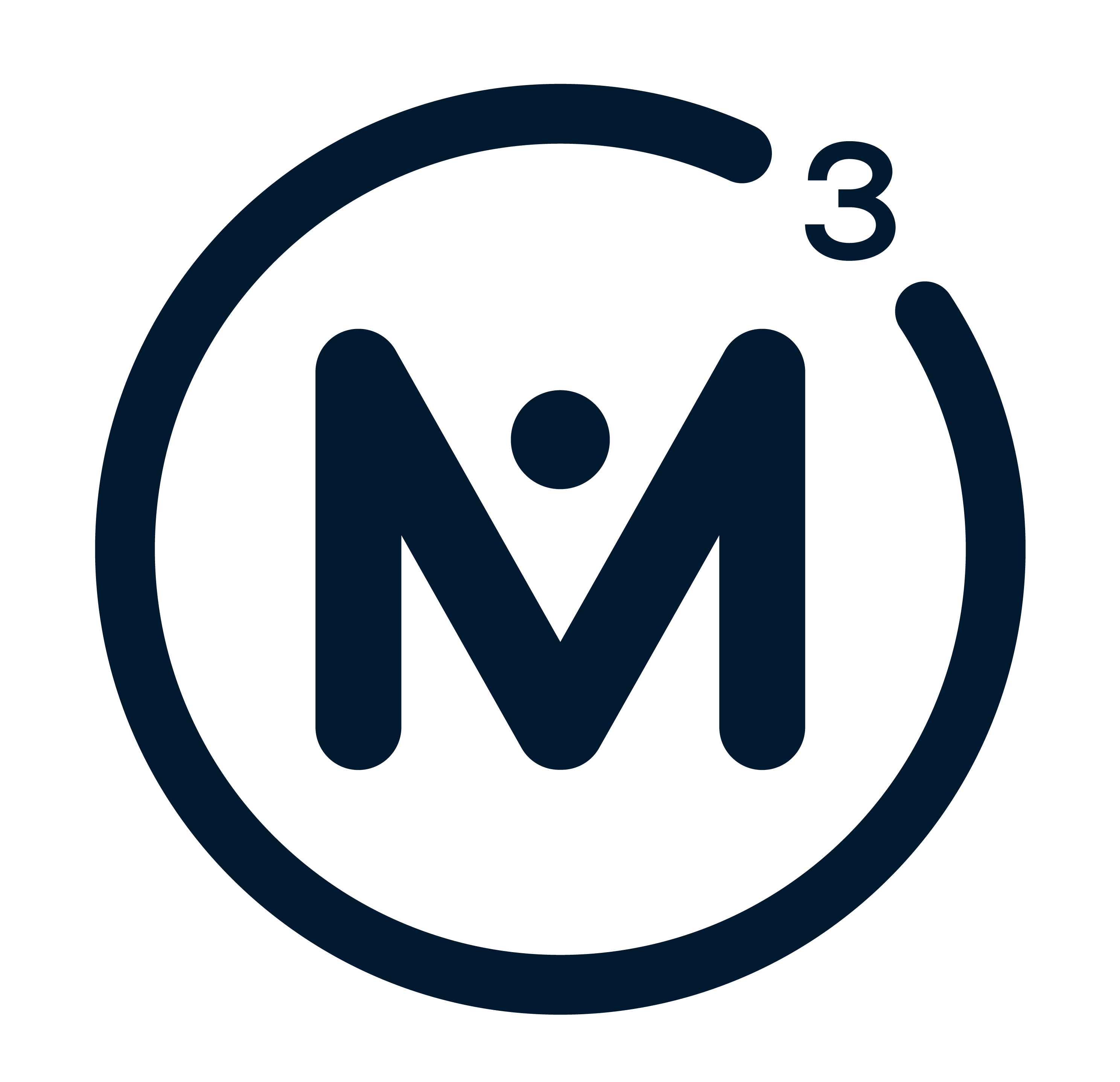
0 Comments